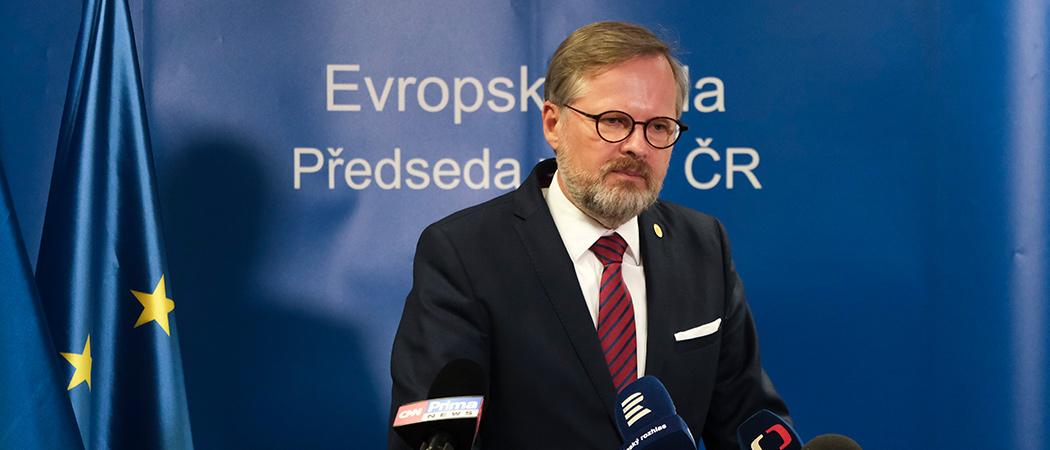The Czech presidency of the Council of the EU starts on Friday with plans to focus on research infrastructures, synergies and a new strategy for European innovation

Petr FIALA (Prime Minister, Czech Republic). Photo: European Union
The Czech government will kick off its presidency of the Council of the EU on Friday, with plans to improve synergies across research and innovation funding programmes, enhance Europe’s network of strategic research infrastructures and take forward negotiations with member states on the upcoming EU innovation agenda.
The European Commission has been attempting to promote synergies in research and innovation funding for some time now. Under the previous R&D programme, Horizon 2020, many high quality grant applications were turned down because there wasn’t enough money. The Commission aimed to fix this by giving a “seal of excellence” to researchers who missed the EU funding threshold, pre-qualifying them to apply to other funding streams.
As a result of this initiative, the 2021 – 2027 EU budget is expected to allow more of the cohesion funding, which is intended to help less-developed member states and regions level up, to be spent on R&D projects that are endorsed with the seal of excellence. In addition, EU regional funds could be made available directly from national authorities, significantly reducing the administrative burden for applicants.
The EU is also continuing the smart specialisation programme, under which regions are encouraged to identify technologies and sectors in which they have particular strengths and specialise and innovate in these well-defined areas.
In addition, money from the COVID-19 pandemic recovery fund can be invested in R&D.
But while opening up separate funding streams for R&D, it is still not clear how they can work in synergy.
The Czech presidency intends to move the debate on, saying it sees synergies as a “key tool to increase the research and innovation funding intensity in Europe and exploit the full potential of the science and technology cooperation in the EU.”
At the same time as enabling cross-fertilisation, it is hoped to plot out routes for researchers and innovators to access funding from a much broader range of EU schemes, and reduce reliance on Horizon Europe, an oversubscribed programme that favours applicants with more experience in winning EU research grants.
The Czech presidency is hosting a conference on the topic next week in Prague, to exchange ideas and identify bottlenecks that stand in the way of combining EU funding streams for the benefit of researchers and innovators. At the end of the conference, the Czech government will present the ‘Prague Declaration’, a call to reinforce commitments by the Commission and member states to keep up efforts to remove barriers to synergies.
Big research labs
Research infrastructures are also on the Czech agenda. The EU funds a number of strategic research facilities across Europe but needs to spend an extra €4.16 billion on 11 new international labs, according to the latest roadmap from the European Strategy Forum on Research Infrastructures (ESFRI) published in December. Based on the ESFRI roadmap the Czech presidency will steer negotiations on EU Council conclusions, to set priorities for implementing the roadmap.
Taking this beyond the EU, at the International Conference on Research Infrastructures (ICRI), to be held in Brno from October 12 - 21, the Czech presidency will present the ‘Brno Declaration’ calling for the establishment of “a global research infrastructure ecosystem” that takes into account the broader political priorities of the EU in the world.
This idea was first floated by Jean-Eric Paquet, the outgoing director general of the Commission’s research directorate, ahead of the 2021 ICRI meeting, held in Canada.
In Paquet’s view, international research infrastructures could help the world respond better to climate change and foster sustainable development. But, as these facilities get bigger and bigger, and more partners are involved, they need international governance structures.
The model of ESFRI might not be replicable at a global level, but an international group reporting to the Group of Seven (G7), the intergovernmental organisation consisting of Canada, France, Germany, Italy, Japan, the UK and the US, is working on models for international research infrastructure cooperation to solve global challenges.
In a third R&D-related workstream, the Czech presidency will steer deliberations with member states to draw up the Council’s conclusions to the innovation agenda, which the Commission is due to publish next week. The document is expected to start a broader debate on how to position Europe as a global innovation powerhouse.
Council conclusions will also be prepared in response to a report published this month by the European Court of Auditors on the widening scheme under the Horizon 2020 programme. The auditors analysed efforts to reduce the east-west gap in research and innovation and concluded that EU funding schemes set up by the Commission to help bridge the divide need to be backed by investment and reforms in member states.





 A unique international forum for public research organisations and companies to connect their external engagement with strategic interests around their R&D system.
A unique international forum for public research organisations and companies to connect their external engagement with strategic interests around their R&D system.